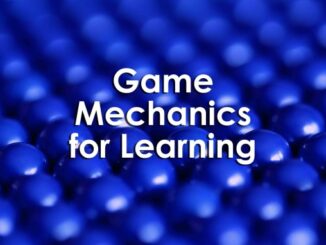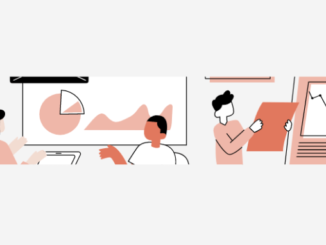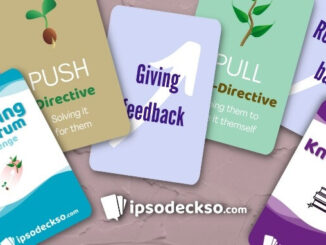
There are many things that need to be taken into account when developing games that are intended for educational purposes. Whilst every product requires different approach depending on things such as your team size, the target audience and the content of the game, these are some general points of consideration that could be useful to keep in mind during development.
The gamification of human activity is by no means a new idea and from a young age, humans have been developing their skills and learning through playful activities including games, which have a unique ability to get players so involved in the gameplay that they enter a unique state of ‘flow’ as they carry out engaging activities within the game.
This has led to the creation of games which aim not only to provide player experiences that are entertaining and engaging, but also try to provide a means of teaching the player or allowing them to hone their skills within certain situations. (E.g. Games which are focused around Mathematics or practising a particular medical procedure.)
Whilst the main obstacle that most educational games will face is creating an engaging experience that will encourage the intended users to keep playing the game, there are other problems that educational institutions face includes:
- Players being afraid of being labelled a gamer by their peers.
- Teachers being unable to properly benefit from these games due to either their inability to properly utilise games within a classroom setting or their attitudes towards games don’t support their use as a learning tool.
- The cost of acquiring the necessary technology and equipment to support the use of educational games and the hiring of specialised staff to maintain and repair the equipment.
The European Alliance for Innovation (EAI) has categorised the challenges that these games face into 3 dimensions(Fernández-Manjón et al., 2015) that each pose unique challenges along with the lines of work need to improve the effectiveness of the implementation of these games within an educational setting.
The Socio-cultural Dimension revolves around the negative image that society has applied to videogames due to the association of multiple cases involving violence, sexism and game addiction. There is also the cultural mindset of school being a place for “serious” activities which excludes playing games and makes including game-based activities to be difficult to include within certain classes.
The main challenges that must be overcome in order to reduce the overall social rejection of games being used as an educational tool are;
- Improving society’s understanding of games as another form of artistic accomplishment, similar to film and music whilst also improving society’s general understanding of the videogames as a medium with what Squire calls “literacy of games”.(Squire and Giovanetto, 2008)
- Avoid designing educational games that include unnecessary violence, sexism or discrimination when presenting conflicts or plots to the player, focusing more on providing informative content that doesn’t distract from the lessons being taught.
- Educating all the involved parties on the social potential and benefits of using videogames as a learning tool, utilising recent research results to reinforce your claims.
The Educational Dimension, which revolves around the concerns of the educational value, teaching effectiveness and efficiency of results of games used as teaching tools as well as the training that teachers will require in order to adopt the new technologies and working habits they may be unfamiliar with in order to effectively use games as a teaching tool.

In order to improve the educational value of games, the necessary measures may include;
- Improving the access of educational videogames in existing and future educational resource repositories by encouraging teachers to both search for and assess the effectiveness of games to be used within the educational sector in a similar fashion to how other educational materials are currently registered. (Looking at educational content, target students’ age group, content etc.)
- Creating effective user and best practise guides for games that may be complicated and difficult to teachers who’re lacking in game literacy.
- Creating communities centred around educational games, allowing educators to share their knowledge and resources with others within the educational sector.
The Technological dimension focuses primarily on the excessive costs of developing educational games, the lack of effective support tools that allow effective monitoring of the results of player activity and the capability of schools being able to provide suitable devices that can run educational games.
The lines of work necessary for the problems in this dimension to be overcome aim to reduce the technological barriers that increase the difficulty of developing educational games and deploying them within the educational sector, whilst also making it easier for teachers to use the tools that they are given. The required lines of work include;
- Lowering development costs and providing new development tools and methodologies to make he creation of games cheaper and simpler.
- Look into participative models which allow pedagogy experts to easily work alongside programmers and artists within the game development process.
- Reducing the technological requirements of deploying games within the educational sector, striking a balance between having games that aren’t graphically intensive but are also attractive to the player.
- Explore the possibility of developing games that allow students and teachers to use their own devices without disregarding accessibility, security and privacy of the users.
Whilst these points may not be entirely relevant to every development project, they are important things to consider when tackling the problem that educational games face and hopefully we’ll start seeing more games being used within the educational sector without the social stigma that often follows them, leading to a more engaging and fun learning experience for everyone involved.
- Observing how games teach players to think and plan ahead - 12th March 2021
- Learning about systems using games. - 15th January 2021
- Focus on… Wargaming and Wargames - 8th November 2020





The application of EAI’s 3d framework:
1) Socio-cultural Dimension,
2) Educational Dimension, and
3) Technological Dimension,
provides the reader with a valuable suite of lenses to view the potential obstacles presented in the educational application of serious games and simulations.
Very succint, Thomas. I think we are making progress on the challenges you mention above, but it is painfully slow going. I usually measure it by the number of times I have to say ‘no, for adults’ when telling people what I do.
Trying to make these kinds of things easily digestible for people who don’t have time/patience for these kinds of things is a life long struggle for me Sarah, happy to see I’m not the only one with this kind of trouble!